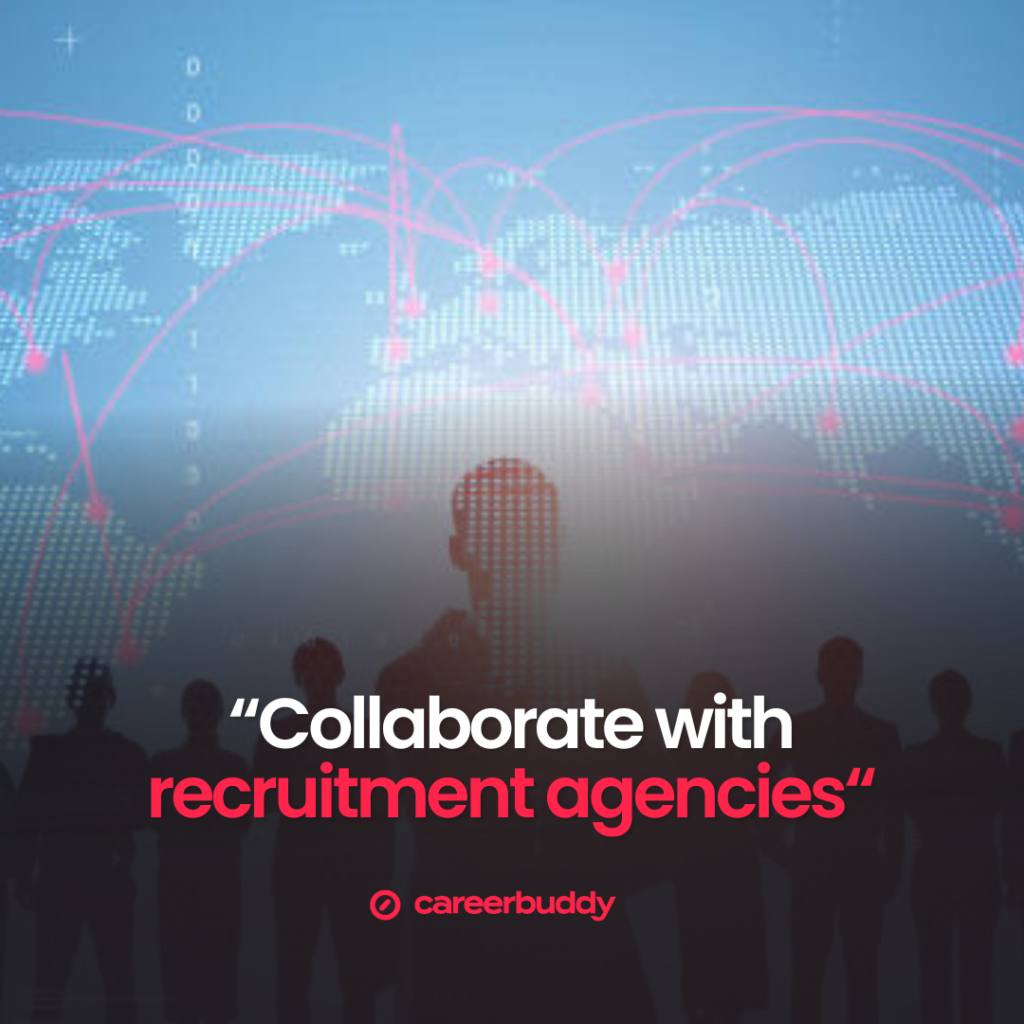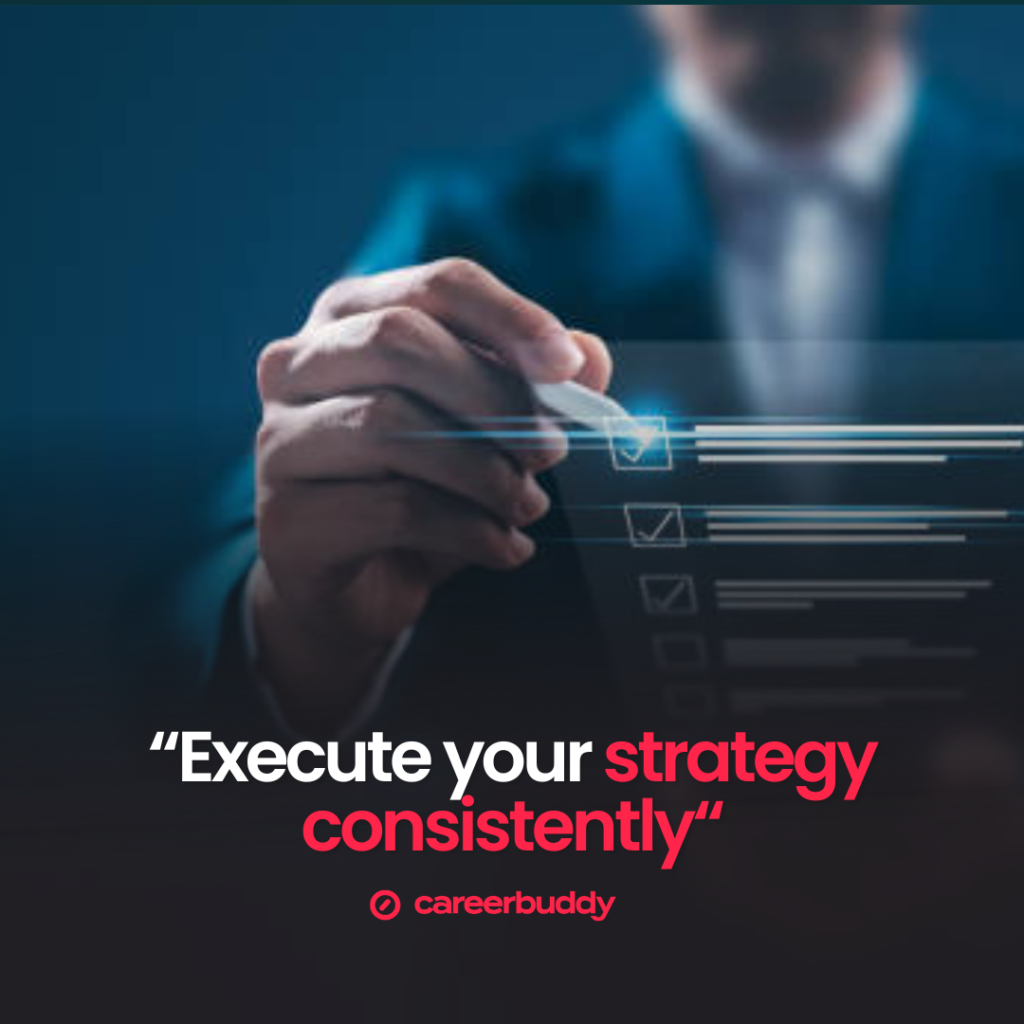In the world of hiring, whether you're a small startup or a big company, the goal is the same: Leveraging top recruiting strategies and finding great people who stick around. But how do you do that?
It all starts with understanding what makes employees really care about their jobs. That's where an effective recruitment strategy comes in. If you're serious about building a team that's both talented and loyal, buckle up as we reveal the 10 steps in planning a strong recruitment strategy for 2024. This way you not only attract top-notch talent, but also keep them invested for the long haul.
Have a clear vision:
Before moving straight into the hiring process and the whole topic of crafting a recruitment strategy, it's crucial you first map out your plan.
Think about how you'll approach hiring: Ask yourself questions like "What will my interview process look like?" Should I cast a wide net or simply focus on niche platforms?’ ‘Will multiple interview rounds be best or specific assessments?’ When you chart out these details, you’ve easily created a roadmap to guide your recruitment strategy with clarity and purpose. It also allows you to align your efforts with your company's objectives, ensuring that every hire you contribute aligns with its growth and success.
2. Consider your budget:

Next, you should discuss with the finance team to analyze the budget for the roles you want. This is super important because it guides your decisions on where to look for talent and how to entice them to join your company.
For instance, if you've got a limited budget, you might prioritize free or low-cost options like job boards and social media platforms. On the other hand, if your budget allows for it, you could consider investing in recruitment agencies or attending industry events where you're likely to find a larger pool of top talents.
By understanding your hiring budget and using it wisely, you can strategically allocate resources to attract the best talent while staying within your financial constraints. It's mostly making smart decisions to get the most out of your budget!
3. An effective onboarding process:

Onboarding isn't just about getting paperwork done; it's about making your new hires feel like they belong. Starting a new job can be nerve-wracking, but a smooth onboarding process eases those nerves and sets the stage for success in your company. Ensure your new hires have everything they need to hit the ground running, whether it's access to software, training materials, or office supplies.
This not only helps them feel welcomed but also accelerates their integration into your team and their understanding of their role within the organization. Here are a few resources to help you out:
Check out these 4 Excel templates for welcoming new hires in 2024
Discover 15 essential onboarding steps for creating a great first impression!
The 10 must-have employee onboarding software for 2024
Pro tip: Onboarding isn't just a one-time event, it's an ongoing process. Companies that invest in ongoing engagement activities, such as check-ins, feedback sessions, and training opportunities, show their commitment to their employees' growth and development.
4. Make use of recruitment software:

Recruitment software is a game-changer for organizations looking to streamline their hiring process and recruitment strategy. From sourcing quality talent to sending offer letters and beyond, these tools offer you comprehensive features designed to make any recruitment process super easy.
Firstly, recruitment software excels in sourcing talent by helping you identify and attract qualified candidates, including passive ones who may not actively be seeking job opportunities.
Moreover, these platforms facilitate seamless engagement with candidates through features like email templates and centralized notes, so your candidates remain informed and engaged throughout the hiring journey. This not only enhances the candidate experience but also improves an organization's hiring rate.
Some advanced recruitment software go beyond hiring and even manages the onboarding process, ensuring a smooth transition from candidate to employee.
For teams hiring remotely, using recruitment software makes things easier by handling your paperwork, organizing information, and helping you make smart hiring choices quickly. This way, you can find great people faster and build awesome teams without stress.
5. Collaborate with recruitment agencies:

Yes, the talent market is competitive. But, have you tried partnership in your recruitment strategy? Especially with leading recruiting or staffing agencies?
Finding the right people for your company can feel like trying to find a single grain of sand on a crowded beach. Can be tough. That's why more and more businesses are teaming up with recruitment agencies to make the search easier. But how exactly can they help you?
It’s simple. They take the time to understand what your company needs and then go out and find the perfect match for you.
So, if you're still not sure whether to use a recruitment agency, here's the bottom line: They make your life easier. They streamline your hiring process, find you top-notch candidates, and let you get back to focusing on what you do best! Don’t know how to choose the best recruitment agency for your needs? Start here
6. Invest in Employer Branding:

Building a standout reputation for your company is the magnet that draws in the best talent. To accomplish this, you first have to think about what sets your company apart. This includes its values, mission, and culture. Then, find ways to showcase these aspects in a compelling way. You can do this through employee testimonials, social media posts, or even company events.
Next, consider how you can make your workplace a welcoming and inclusive environment. Offer perks and benefits that reflect your company's values and show employees that they're valued members of the team.
Additionally, think about how you can create opportunities for growth and development. Whether it's through mentorship programs, training sessions, or career advancement opportunities, show candidates that there's room for them to learn and grow within your company. A good example of this is how Nestlé, P&G, and Walmart are carrying out their 2024 talent retention secrets.
By focusing on these aspects, you'll not only attract top talent but also build a team that's passionate and committed to your company's success.
7. Leverage employee referrals:

When we talk about leveraging employee referrals as a recruitment strategy, we're essentially tapping into the power of your current team to find new talent.
At PURE, 40-60% of hires come from referrals. Their secret? They ask new hires for referrals early on, here's how it works:
Encouragement: First things first, you want to motivate your employees to refer their talented friends or acquaintances. You can do this by simply letting them know that you value their recommendations and that you're open to hearing about anyone they think would be a good fit for the team.
Why it works: Your employees know the ins and outs of your company, they understand the kind of people who thrive in your workplace. When they refer someone, they're essentially saying, "Hey, I think this person would be great here because they have the skills and attitude we value."
Retention: People who come in through referrals tend to stick around longer. That's because they already have a connection to someone on the team, which makes them feel more comfortable and invested in the company.
So, by encouraging your employees to refer talented individuals, you're essentially tapping into a hidden pool of potential hires who are more likely to fit in well with your team and stick around longer.
Plus, it's a win-win situation: your employees feel valued and rewarded for their contributions, and you get access to top-notch talent without having to look too far.
8. Speed up the hiring process:

What’s the popular quote again? Time waits for no man. Cutting down delays between hiring stages is a smart way to speed up your recruitment strategy. Top candidates often get multiple job offers. Being able to hire them quickly gives you an advantage.
So, how can you speed up the hiring process? Firstly, take a good look at your current process. Are there any steps that seem to drag on without adding much value? Streamlining means cutting out the unnecessary bits to make things move faster.
Next up, tools like applicant tracking systems (ATS) can handle your paperwork, keep everything organized, and help your team communicate better and faster.
Now, about your team. Equip them with clear guidelines and set realistic timelines for each stage of hiring. Make sure everyone knows their role and sticks to the plan. Good communication and quick decision-making are key to keeping the ball rolling.
But don't forget about the candidates! Keep them in the loop about where they stand in the process. Timely updates and feedback show that you value their time and effort. Plus, a positive experience can make them more likely to choose your company in the end.
9. Review your compensation packages:

Ensuring your company offers competitive compensation is crucial for attracting the best talent and a key factor for a winning recruitment strategy. To properly go about this, start by researching what other companies in your industry are offering in terms of salaries and benefits. This gives you a benchmark to work from and ensures you're not falling behind the competition.
While salary is important, don't overlook the value of additional perks and benefits. Consider offering things like flexible work hours, remote work options, or professional development opportunities to sweeten the deal and make your company stand out.
Pro tip: Keep a close eye on industry trends and changes. If you notice that salaries are rising or certain benefits are becoming more common, be prepared to adjust your compensation packages accordingly to stay competitive.
10. Optimize job postings:

Focus on creating specific job descriptions that highlight the role's unique selling points. Need help? Here's how you can do it in simple steps:
Make your job descriptions stand out by highlighting what makes the role special. Use clear language that engages candidates and explains exactly what they'll be doing.
Think about the words candidates might use when searching for jobs like yours. Include these keywords naturally in your job description to improve visibility on search engines.
If you're posting jobs on your website, you can tweak the HTML code so Google knows it's a job posting. Ask your tech team to help with this, or check if the job boards you use already do it for you.
Spread the word about your job openings far and wide. Share them on social media, industry forums, and other platforms. Include links back to your website to drive traffic.
These are like mini ads for your job postings in search results. Write a brief and enticing description of the job, and make sure the title accurately reflects the role.
By adding these simple steps to your recruitment strategy, your job postings get noticed by the right candidates and attract top talent to your team.
11. Monitor metrics:

Monitoring recruiting metrics helps you make sense of all the data around the hiring process and your recruitment strategy. But, trying to track every single one can be overwhelming. So, let's focus on the 8 most crucial metrics that will give you the most results:
Time to fill: Measures how long it takes from the moment you decide to fill a job vacancy to when you finally have someone hired. If your time to fill is too long, consider streamlining your hiring process.
Time to Hire: Time to hire focuses on the duration it takes from when a candidate is approached for a job to when they officially join your team. If your time to hire is lengthy, you might want to assess where the hold-ups are happening.
Source of Hire: Keep track of how candidates find out about your job openings, whether it's through job boards, social media, referrals, or other channels. Once you know which sources are most effective, you can allocate more resources to those channels and maximize your return on investment.
Quality of Hire: This metric evaluates how well your new hires perform in their roles and contribute to your organization's success. If you find that certain hiring sources consistently yield high-quality hires, consider doubling down on those channels.
Cost per Hire: Hiring isn't cheap, so it's essential to keep tabs on how much it's costing you to bring in new talent. To calculate cost per hire, add up all the expenses associated with hiring; such as job ads, recruiter fees, and onboarding costs. Then divide by the number of hires. If your cost per hire is higher than you'd like, look for ways to reduce expenses.
Applicants per Opening: This metric tells you how many candidates are applying for each job vacancy. While a high number of applicants might seem promising, it's essential to ensure that you're attracting the right candidates for the role. If you're getting too many unqualified applicants, consider refining your job descriptions or targeting your job ads to more specific audiences.
Application completion rate: This metric measures how many candidates start the application process versus how many actually finish it. A high completion rate indicates that your application process is user-friendly and engaging, while a low completion rate suggests that candidates might be encountering obstacles or dropping out due to frustration.
Offer acceptance rate: Offer acceptance rate tells you how many candidates accept your job offers compared to the total number of offers extended. A high acceptance rate indicates that your offers are competitive and align with candidate expectations. If your acceptance rate is lower than you'd like, consider conducting candidate surveys to gather feedback on your offer packages and identify areas for improvement.
By tracking these metrics in your recruitment strategy and understanding how they impact your recruitment process, you can make data-driven decisions to ultimately build a strong and successful team.
12. Execute your strategy consistently:

Once you've mapped out your recruitment strategy and it’s good to go, it's time to put it into action. Remember to stick to your plan and follow through with each step consistently. This means making hiring decisions according to the strategy you've laid out.
While you can't predict the future, keep in mind that change is inevitable, so it's important to be prepared to adapt your strategy when needed.
Stay in regular communication with your team and be proactive about identifying any potential roadblocks or challenges.
By using these recruitment strategies, you'll be all set to find the best people for your team. High five and good luck!
FAQS
What is a recruitment strategy?
Recruitment strategies are like roadmaps that guide organizations in finding and attracting the right talent to meet their staffing needs. These strategies involve methods to identify, engage, and hire qualified candidates.
How can I be more strategic in recruitment?
In summary: First, match hiring goals with what the company wants to achieve. Then, plan for future staff needs by looking ahead. Use data to learn more about finding talent and make the company look good to attract great people. Also, get current employees to help find new ones, and always check if things are working well and adjust if needed.
What are the 8 steps in the selection process?
The selection process typically involves: Identifying job requirements, posting job openings,
receiving applications, screening candidates, conducting interviews, administering assessments, checking references and making offer
Where can I get a credible recruiting agency?
Want to save yourself the stress of enquiring about a recruitment agency? Careerbuddy is the leading agency for recruiting the best talents in Africa. Careerbuddy has partnered with top companies like Flutterwave, Paystack, Moniepoint, and Andela. We provided these companies with an extensive network of high-performing candidates across various sectors and successfully scaled their businesses with strategic vetting and hiring solutions.
Careerbuddy is more than just a recruiting agency, we are your full-service partner and advisor for your hiring needs.
If you enjoyed this, check out:
